Last Updated on November 9, 2025 by Maged kamel
How to determine y bar for a right angle-case-1?
For more information about the difference between case-1 and case-2, please refer to post-2.
Using a horizontal strip to get the y-bar for a right angle- case-1.
We will start by using a horizontal strip to determine the y-bar value or the Cg vertical distance to the y-axis.
We have X and Y axes, respectively, and the base of the triangle with a dimension of b.
We have line AB with the length of b, the rise of the triangle is h, and the inclined portion AC, equation: y =mx+C, where m is a slope equal to -h/b *x, and the intersection with the y-axis =h. The area of the strip is the product of (dy*x).
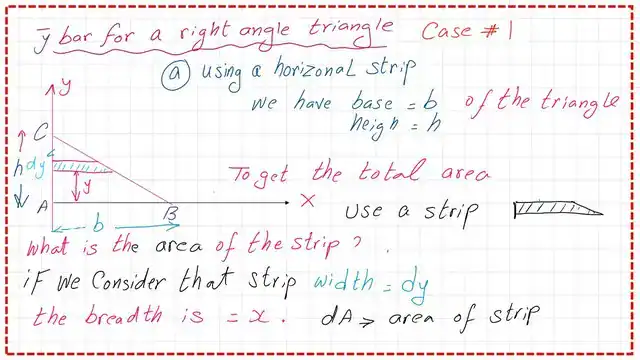
That’s why the AC equation is Y =-( h/b) *x+h. our horizontal strip breadth=x and the width=dy.
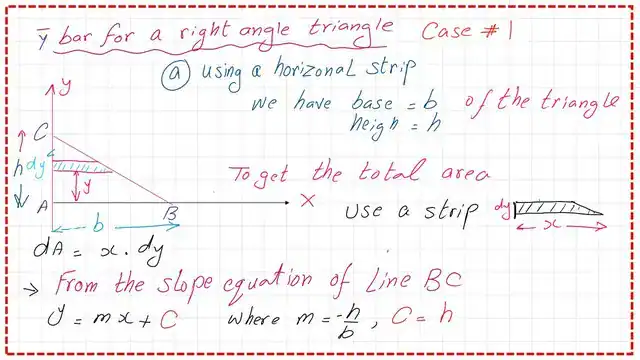
First, it is good to examine the equation of the inclined line BC By substituting the value of x=0, which is point C, and checking that the corresponding y value=h, when using the equation y=-(h/b)*x+h).
We have Y=h when x=0.
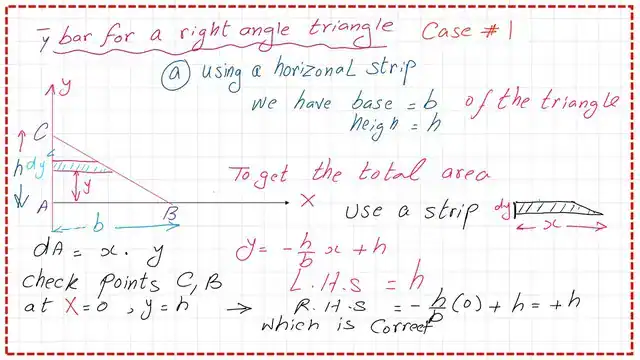
For the second point, point B, we have x=b, based on the line equation, the corresponding y value is zero.
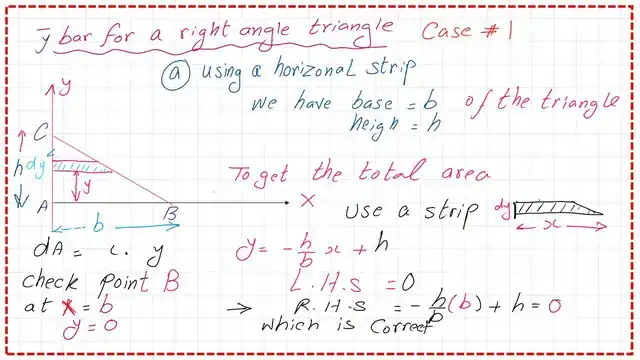
Perform integration for the horizontal strip to get the area of the right-angle triangle.
The area of the triangle is the sum of all the tiny horizontal strips, which can be expressed by integrating over the strip from the start, which is y=0, to the end, which is y=h, considering moving the strip in the vertical direction.
Since the strip width is x and its height is y from the x-axis, we are going to use the relation by y and x as derived from the equation of line BC. We will estimate the area dA as the product of x*dy. Since integration is in the vertical direction, we will omit x expression by substituting its value in terms of y.
The value of x derived from the line equation can be set equal to (h-y)/h*(b), where y is the height of the strip from the base of the Triangle.
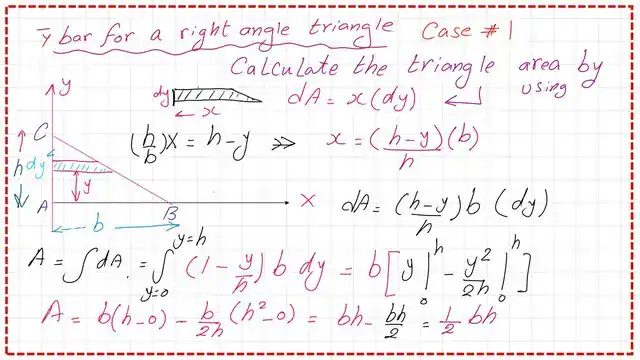
Proceed with the integration in the vertical direction starting from y=0 to y=h, we will get the final area=0.50*b*h, which is a known formula for the area of a right-angle triangle, that is the product of half base* height, where base equals b and height equals h.
Integrate the horizontal strip to get the first-moment area and y-bar for the right triangle case -1.
The expression of the first moment of the strip about the x-axis can be written as dA*y-strip, where the strip area is dA and y distance for the strip is the vertical distance from the Cg of the strip to the x-axis.
The expression of dA*y-strip is shown in the next slide image, and integration will be carried out in the vertical direction from y=0 to y=h.
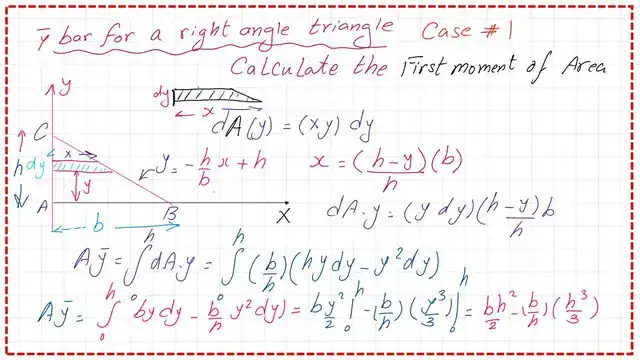
The final A*y bar represents the product of total area * the vertical CG distance from the X-axis will be found as in our case=b*h^2/6, where b is the triangle base while h is the height. The vertical distance between the Cg and the X-axis, which is designated as the Y bar value, will be obtained by simply dividing the first moment of area by the Area. We will get y bar for a right angle=h/3 or one-third of the opposite side height.
The data for the X bar and Y bar for the right-angle triangle are shown in the next slide image.
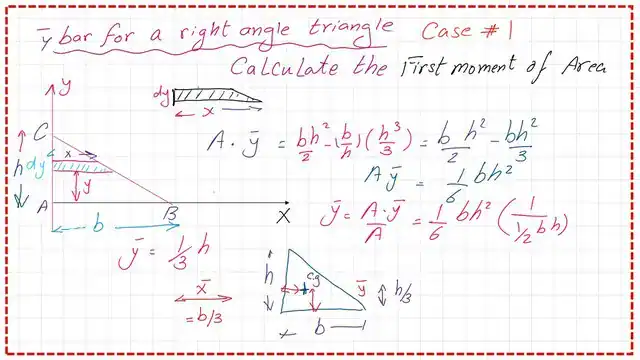
For a good external reference, please refer to the following link.
The next post is X bar for a right-angle case 1 using a vertical strip.